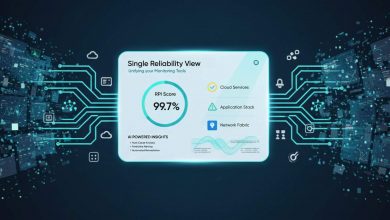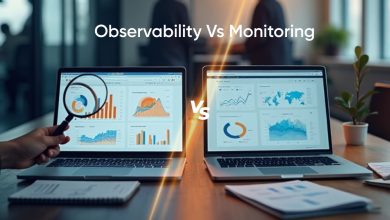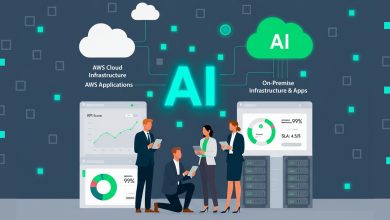How to Reduce Network Downtime by 80% with AI
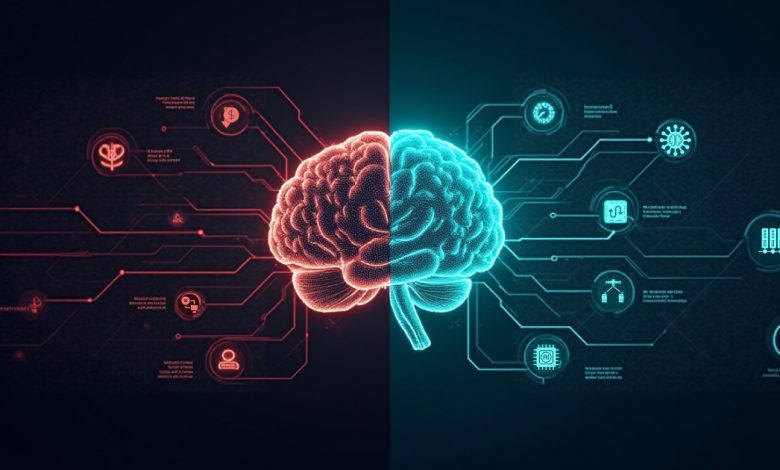
Introduction
At 4:03 p.m. on launch day, conversion rates decrease and internal communications increase. Although dashboards appear normal, the 95th percentile (p95) latency rises from 640 ms to 873 ms within 11 minutes. Such scenarios are common in network operations.
Network downtime isn’t just an IT problem; it’s a business drain. Every minute, money, momentum, and customer trust slip away. For large enterprises, even a single hour of downtime can result in millions of dollars in costs.
Artificial intelligence (AI) is transforming network management. Through predictive analytics, intelligent alerts, and self-healing networks, IT teams can reduce incidents and decrease Mean Time to Resolution (MTTR) by up to 80%. AI not only accelerates response times but also anticipates issues before they escalate into widespread outages.
The Cost of Network Downtime
Financial Impact on Businesses
Failed checkouts, SLA penalties, and refund costs add up quickly. According to widely cited estimates, network downtime can cost around $5,600 per minute, and this figure increases with the size and complexity of your operations.
For instance, in e-commerce, a mere ten-minute outage during a flash sale can result in losses of tens of thousands of dollars. In financial services, an hour of downtime can result in millions lost in trading opportunities, while healthcare institutions risk regulatory fines and operational chaos.
Operational Disruptions and Productivity Loss
When systems go offline, employees lose access to essential tools and data. Delays ripple through workflows, projects, and supply chains, creating ripple effects that extend far beyond just financial losses.
For example, if a manufacturing company’s inventory system fails during a shift, production lines slow, shipments are delayed, and overtime costs increase as teams address the disruption. Network downtime affects the entire business ecosystem, not merely operational convenience.
Customer Experience and Reputation Damage
Contemporary customers expect continuous service reliability. Frequent outages erode trust, drive clients to competitors, and damage brand reputation. A single negative experience may result in the loss of previously loyal customers.
For instance, if a Software as a Service (SaaS) provider experiences a platform outage during peak hours, users may question the reliability and security of the service. Negative reviews can rapidly disseminate across social media, and restoring customer trust may require several months or longer.
Why Traditional Monitoring Falls Short
Manual Troubleshooting Takes Too Long
IT teams often rely on reactive measures after an issue occurs. This delay prolongs downtime and frustrates users waiting for a fix. Manual checks can involve hours of log inspection, ticket tracking, and on-site intervention time that businesses simply can’t afford.
Limited Visibility Into Complex Systems
Modern IT infrastructures span cloud, on-premises, and hybrid environments. Traditional monitoring tools often fail to provide a unified view, leaving blind spots where early warning signs hide.
In multi-cloud deployments, one misconfigured load balancer or network segment can cascade into widespread service disruptions before a human team even realizes there’s a problem.
Reactive vs. Proactive Maintenance
Conventional monitoring reacts to problems after they happen. Businesses need proactive systems that prevent outages before they occur. Taking a proactive approach helps reduce the number of incidents and lets IT teams schedule maintenance during periods that minimize business disruption.
How AI Reduces Network Downtime
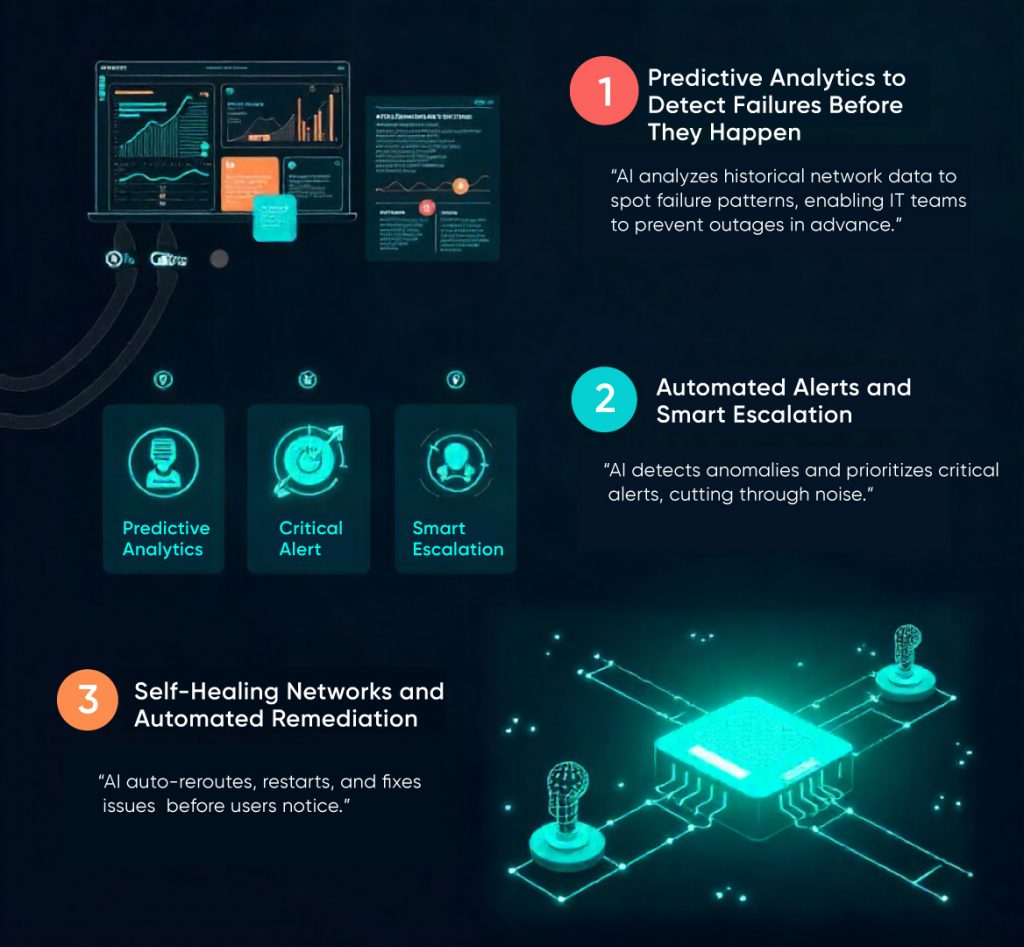
Predictive Analytics Detect Failures Before They Happen
AI analyzes historical and real-time network data to identify patterns that may indicate potential issues, enabling IT teams to proactively address problems before an outage occurs.
For instance, AI can detect subtle latency trends, unusual packet loss, or irregular API response times that indicate a future outage. This predictive capability transforms IT operations from reactive firefighting to preemptive maintenance.
Automated Alerts and Smart Escalation
AI-powered alerts go beyond generic notifications. They intelligently prioritize critical issues, reduce alert noise, and ensure the right teams respond quickly.
Instead of bombarding IT teams with hundreds of minor alerts, AI filters signals, focusing on anomalies that could impact customers, revenue, or compliance. This improves efficiency and ensures faster response times.
Self-Healing Networks and Automated Remediation
Some AI systems can automatically reroute traffic, restart services, or apply fixes, resolving issues before users even notice.
For example, if a server goes down, AI can automatically redirect traffic to backup nodes and restart services, minimizing downtime. This hands-off approach lets IT teams concentrate on strategic initiatives rather than repetitive firefighting.
Real-World Benefits of AI in Network Management
Significant Reduction in Downtime
A leading financial institution implemented AI-driven network monitoring, achieving an 80% reduction in unplanned downtime within the first year and saving millions in potential revenue losses.”
An e-commerce company leveraged AI to prevent outages during seasonal peaks, ensuring a seamless customer experience and higher conversion rates.
Improved IT Team Efficiency
By automating routine monitoring and issue detection, AI enables IT staff to concentrate on strategic initiatives instead of managing recurring outages. Teams spend less time sifting through logs and more time optimizing infrastructure and planning for growth.
Enhanced Network Reliability and Uptime
AI-driven systems strengthen overall network resilience, ensuring uninterrupted service and increased customer trust and loyalty. Businesses can confidently scale operations, knowing their networks are actively monitored and protected.
Transform Network Reliability: ScoutITAi Cuts Downtime by 80%
Getting Started with AI for Network Reliability
Choosing the Right AI-Powered Tools
Look for solutions that integrate seamlessly with existing infrastructure, provide predictive insights, and scale with your business growth. Evaluate features like anomaly detection, automated remediation, and reporting capabilities.
Integration With Existing IT Infrastructure
Successful adoption requires blending AI with current monitoring systems. Ensure compatibility with cloud platforms, servers, and security protocols. A phased integration approach helps minimize disruptions during deployment.”
Best Practices for Implementation
- Start with a pilot project before full rollout.
- Train IT staff on interpreting AI-driven insights.
- Continuously refine the system with feedback and new data.
- Establish clear KPIs to measure uptime, MTTR, and incident reduction.
Future of AI in Network Operations
From Monitoring to Autonomous Networks
AI is evolving beyond detection. The future lies in fully autonomous networks capable of anticipating, preventing, and resolving issues without human intervention.
AI-Driven Cybersecurity Layer for Network Protection
AI not only minimizes downtime but also identifies cyber threats more quickly than traditional systems, enhancing overall network resilience. With real-time threat detection, businesses can avoid outages caused by ransomware, DDoS attacks, and other cyber incidents.
What Businesses Can Expect in the Next 5 Years
Rapid adoption of AI-first operations will make uptime, security, and efficiency largely autonomous, requiring minimal manual intervention. Organizations can expect:
- Fully automated network health monitoring
- Predictive issue resolution
- Integrated security and operational reliability
Conclusion
Network downtime is expensive, disruptive, and erodes customer trust. AI-driven monitoring and automation enable businesses to shift from reactive firefighting to proactive prevention, reducing outages by up to 80%, improving network performance, and boosting customer satisfaction.
Experience the difference for yourself. Book a demo today to see how predictive monitoring, intelligent alerts, and self-healing networks can transform your IT operations and protect your business from downtime.
FAQs About AI and Network Downtime
Network downtime can result from hardware failures, software bugs, cyberattacks, misconfigurations, and human error. Complex IT environments further complicate troubleshooting.
AI predicts potential failures using historical and real-time data. It sends smart alerts, prioritizes critical issues, and can automatically resolve some problems through self-healing processes, reducing downtime by up to 80%.
Implementation costs depend on the scale of your infrastructure and the tools you select. While AI solutions require an upfront investment, the savings achieved by preventing downtime typically outweigh these costs.
No. AI complements IT teams by automating repetitive tasks, analyzing large datasets, and providing predictive insights, allowing staff to focus on higher-value, strategic initiatives.
Yes. Many AI solutions seamlessly enhance current platforms, cloud services, and IT management tools without the need for a full system overhaul.
Industries that rely on high uptime, such as finance, healthcare, e-commerce, telecom, and SaaS, derive significant advantages from AI-powered monitoring and automation.
Most organizations begin noticing improvements within a few months, with measurable reductions in downtime typically observed within the first year of implementation.
Yes. AI can detect anomalies and cyber threats faster than traditional systems, enhancing overall network resilience and reducing downtime caused by security incidents.
AI can automatically track network incidents, generate audit-ready reports, and ensure that IT operations meet regulatory requirements, reducing risk and administrative workload.
Absolutely. Cloud-based AI solutions scale to smaller infrastructures, helping SMBs reduce downtime, increase reliability, and compete effectively with larger enterprises.

Tony Davis
Director of Agentic Solutions & Compliance

